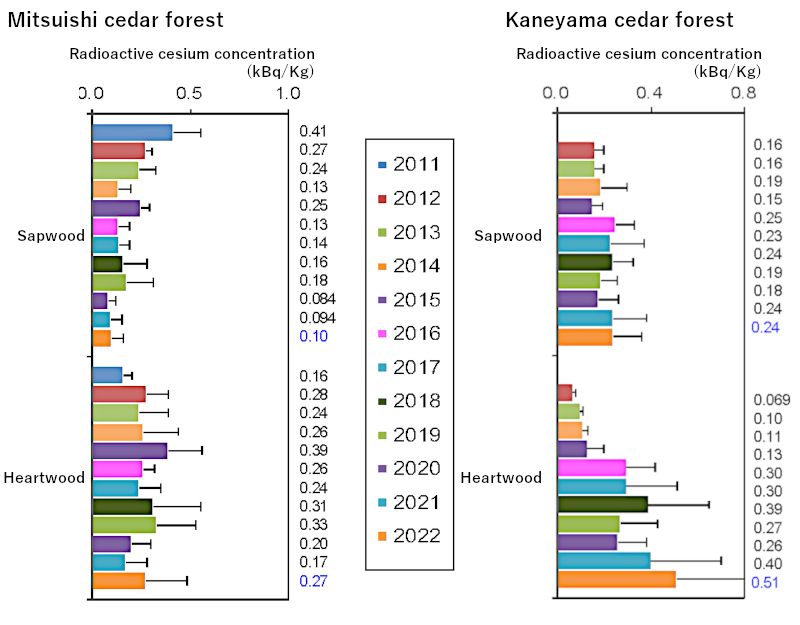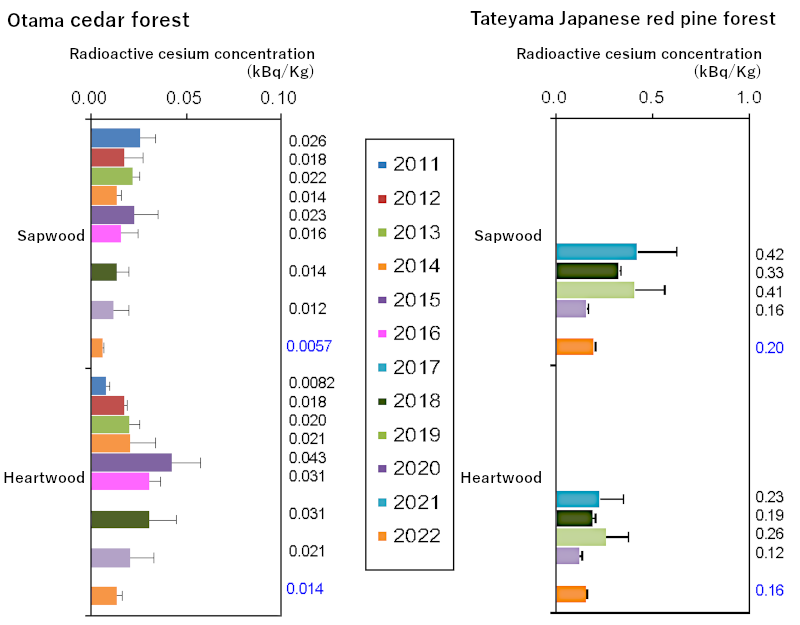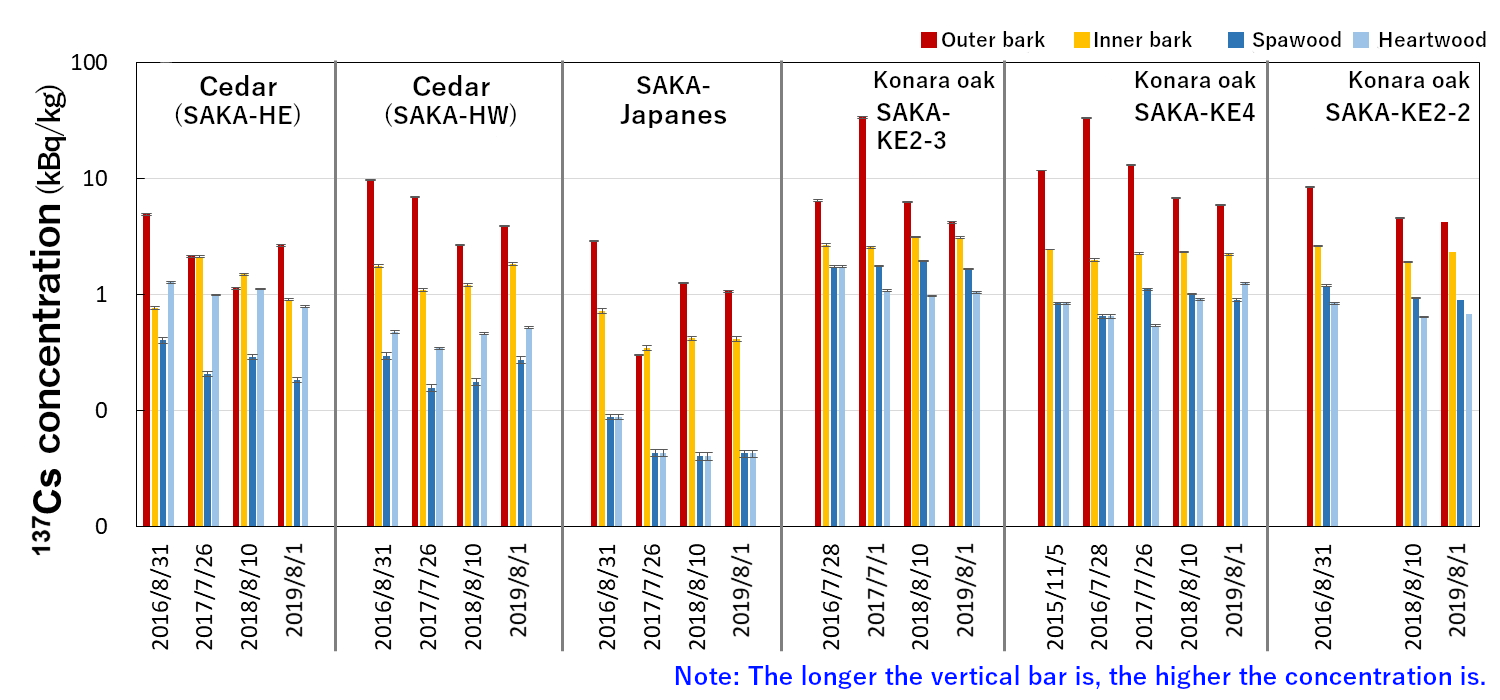Radioactivity Dynamics in forests
(2024)
QDo radioactive cesium concentrations in trees increase over time? If so, can such trees be used as timber?
ARadioactive cesium concentrations in wood (heartwood and sapwood) are far lower than those in other parts of trees, and no significant change in these concentration levels has been observed over years.
When forests are contaminated with radioactive materials, some of these materials are considered to migrate to the inner wood of tree trunks.
Since 2011, the Forestry Agency has continued surveys of radioactive cesium concentrations in wood at 10 locations in Kawauchi Village and Otama Village, including cedar forests, Japanese cypress forests, Japanese red pine forests, and konara oak forests.

Fig.1 Wood sampling with an increment borer

Fig.2 Components of a tree trunk
Surveys show that radioactive cesium concentrations have not changed much in cedar sapwood, while those in cedar heartwood increased until around 2015 and have indicated no significant change since then.
However, it was found that in some areas, such as in cedar forests in Kaneyama, radioactive cesium concentrations continue to increase in both sapwood and heartwood. Looking at other tree species, konara oak trees showed increasing radioactive cesium concentrations in both sapwood and heartwood.
Meanwhile, past surveys found no upward trends in radioactive cesium concentrations in Japanese red pine wood. We have also found that radioactive cesium concentrations in wood tend to be lower for the Japanese red pine than those for other tree species.


Fig.3 Changes in radioactive cesium concentrations (kBq/kg) in wood from Mitsuishi cedar forest, Kaneyama cedar forest, Otama cedar forest and Tateyama Japanese red pine forest
Source: Forestry Agency’s website, “Results of the FY2022 Survey on Radioactive Material Distribution in Forests”
(https://www.rinya.maff.go.jp/j/kaihatu/jyosen/
r4_surveys_on_radioactive_cesium.html)

Fig.4 Changes in radioactive cesium concentrations (kBq/kg) in wood from Mitsuishi konara oak forest and Mitsuishi Japanese cypress forest
Source: Forestry Agency’s website, “Results of the FY2021 Survey on Radioactive Material Distribution in Forests”
(https://www.rinya.maff.go.jp/j/kaihatu/jyosen/
r3_surveys_on_radioactive_cesium.html)

Fig.5 Changes in 137Cs concentration in bark and wood, by tree species (2015-2019)
(Sample data for Yamakiya in Kawamata Town)
- Concentration each year: Higher in bark and lower in wood
- Survey results for 2015-2019: Concentrations decreasing in outer bark. No visible change in other aspects
- Concentrations higher in sapwood than in heartwood - a trend observed only in cedars and suggesting the possibility of cesium migration within the trunk (from bark to wood)
Related articles
- In future, what will be radiation exposures to forest workers? Are there any methods to reduce it?
- Does the concentration of radioactive cesium deposited in mountain forests vary by altitude and location?
- Do high concentrations of radioactive cesium continue to be deposited on riverbeds? 【Deposition of sediment in riverbeds】
- Do high concentrations of radioactive cesium continue to be deposited on riverbeds? 【137Cs concentration where sediment continuously deposit】
- Does the concentration in river water change before and after forest fire? How did it change by time?
